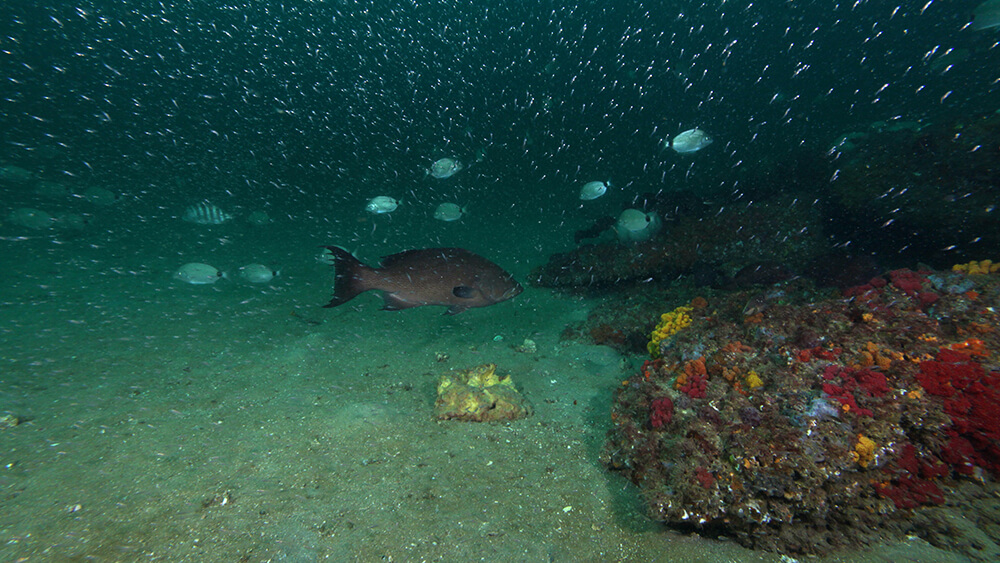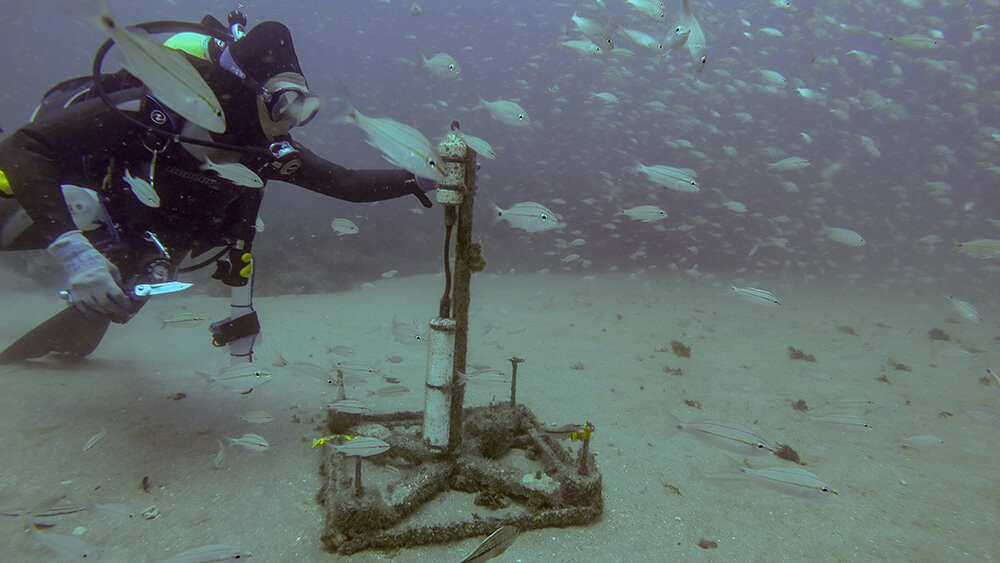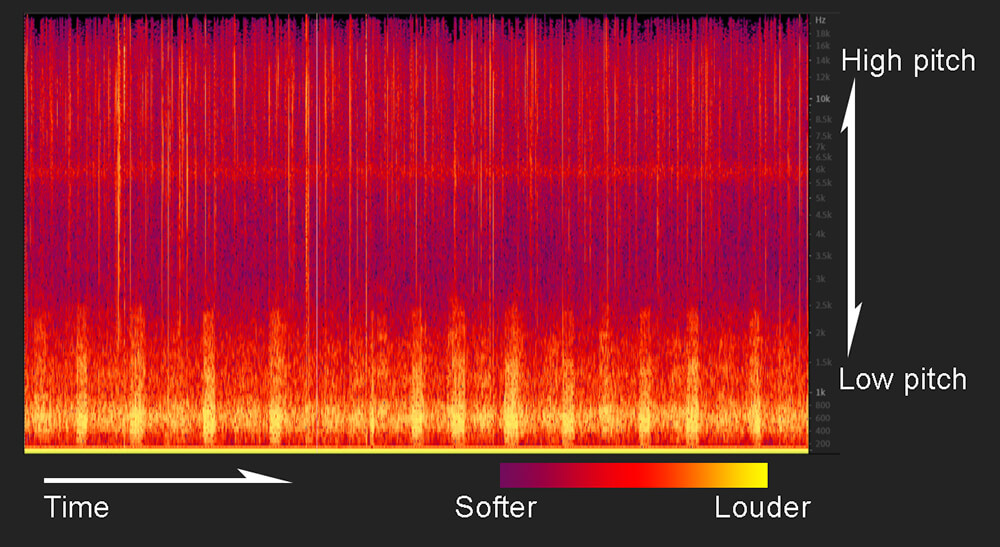Diving at Gray's Reef

Gray's Reef is teeming with marine life一from loggerhead sea turtles that rest at the reef, to the more than 200 unique species of fishes and sharks and 900 species of invertebrates. With the abundance of marine life, the sights and sounds while scuba diving are also unique to the region.
Sights

In sandy areas you are likely to see flounder buried in the sand, as well as soft corals and other filter feeders rising into the currents. The sand is sometimes a thin layer, regularly moved by the constant-flowing waters to expose and cover the hard, rocky seafloor.
When diving on the ledges and live bottom of the sanctuary, you will encounter overhangs, undercuts, and ridges that fishes and other invertebrates use to find food or avoid predators. Amazingly, most of the colors seen are animals attached to the rocks. Be careful when diving near these ledges not to touch the seafloor or damage the ledges. Around the reef are schools of tomtate or Atlantic spadefish that may surround a diver out of curiosity before moving on. Additionally, more opportunistic sea life to see include octopuses, crabs, lobsters, turtles, dolphins.
Sounds

For ocean animals, sound plays an important role in finding mates, food, habitat, and avoiding predators. Marine scientists have been using underwater microphones—known as hydrophones—to better understand soundscapes in national marine sanctuaries. The sounds that humans make in the ocean—from shipping or boating—overlap with frequencies often used by animals.
The SanctSound project studies ocean sounds using hydrophones in seven national marine sanctuaries and one marine national monument. The recordings have shown how sound levels in the sanctuaries change over time with the seasons and how they differ across the sanctuaries. For example, Gray's Reef is naturally one of the louder sanctuaries on the East Coast of the U.S.. Spring time is especially noisy as waters warm and is the mating season for many marine animals.
Reading a Spectrogram

The Full Spectrum of Sound
When recording sounds at Gray's Reef National Marine Sanctuary there is a high-pitch crackling of snapping shrimp and low-pitch grunts or moans from fishes.
You can learn more about the research being conducted on sound in the sanctuary from our Soundscapes and Animal Movement project page.

